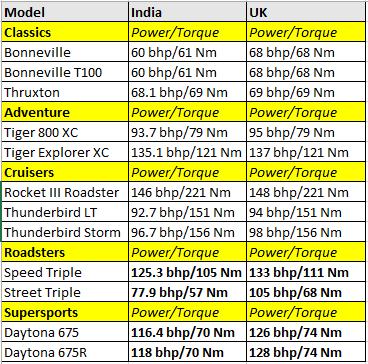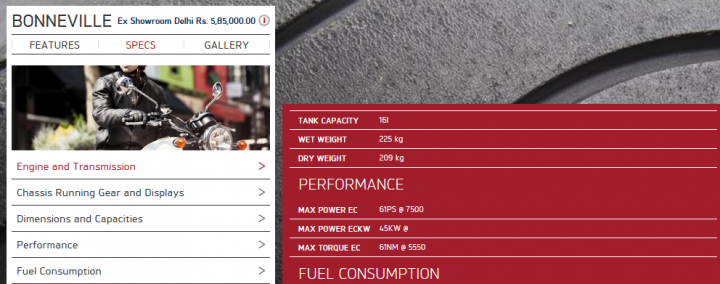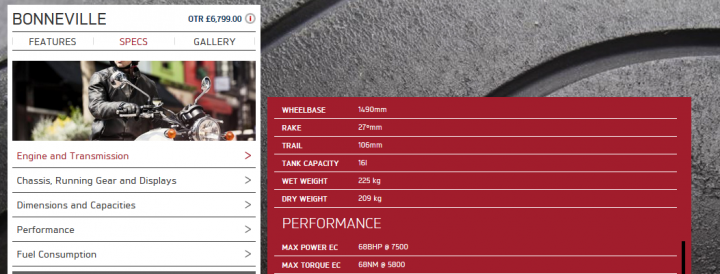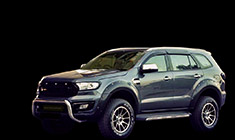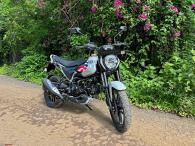News
Triumph detuning motorcycles for India?
Triumph Motorcycles India entered the market amid great anticipation. Since their debut on November 28th, 2013, the British motorcycle maker has launched a total of 12 models under 5 categories. Triumph will be celebrating its 1st anniversary in India soon, with sales figures closing in on a 1,000 units since their debut.
However, whenever India shares a car/motorcycle model with another car market, enthusiasts get skeptical. Down-tuning has become an expectation with many new launches and a post by bhpian DipantS made us take a closer look. A specification comparison between the Triumph India and Triumph UK websites has revealed some rather disappointing facts.
Starting with the Classics, the Indian Bonneville and Bonneville T100 see a difference of 8 bhp and 7 Nm of torque when compared to the UK models (60 bhp/61 Nm in India vs 68 bhp/68 Nm in the UK). The Thruxton on the other hand sees a negligible difference of less than 1 bhp.
The India-spec Tiger 800 XC, Tiger Explorer XC from the "Adventure" series, along with the Rocket III Roadster, Thunderbird Storm and Thunderbird LT cruisers also see a difference of around 2 bhp. The torque figures stated are the same on both sites.
However, the most noticeable difference in specifications, is seen in the "Roadster" and "Supersport" families.
The UK-spec Triumph Speed Triple delivers 133 bhp with the peak torque coming in at 111 Nm. The Indian variant however delivers 125.3 bhp & 105 Nm of torque. Similarly, the Street Triple delivers 105 bhp and 68 Nm of torque in the UK. The Indian variant however, delivers 77.9 bhp & 57 Nm of torque. That equates to a difference of 7.7 bhp/6 Nm for the Speed Triple. The Street Triple sees a colossal difference of 27.1 bhp & 9.9 Nm!
The Indian Triumph Daytona 675 is no different. It delivers 116.4 bhp & 70 Nm of torque. This is 9.6 bhp and 4 Nm less than the UK-spec variant. The Daytona 675R makes 118 bhp & 70 Nm of torque in India. The same bike makes 128 bhp and 74 Nm of torque in the UK. This results in a difference of 10 bhp and 4 Nm for the Indian variant.
Oddly enough, reviews of these models carried out by reputed Indian publications state the same output figures as the UK spec models. The question arises as to whether Triumph always offered these detuned models, or if this is a recent shift?
Harley-Davidson too appears to have altered the models in its "Dyna" family of motorcycles. The US-spec Street Bob displaces 1690 cc while the Indian-spec model uses a 1585 cc mill (A gap of 105 cc or one commuter motorcycle!). The motorcycle makes 124 Nm of torque in India, while the model in the US makes 130 Nm.
The Fat Bob too has the same difference in engine configuration. The India spec Fat Bob makes 126 Nm of torque compared to the US spec's 132 Nm. A drop of 6 Nm in the case of both motorcycles. Harley-Davidson's India and US websites display the same torque figures in the case of other motorcycles in the range (Harley-Davidson doesn't state power figures)
So why have these motorcycles been detuned? Is it to match the average fuel quality available in India? If so, why is it not consistent across the range? Why have reputed publications stated the international specifications when the Indian website says otherwise? Were these motorcycles always down-tuned or is this a recent development? Do customers in India own bikes in different states of tune depending on when they bought their motorcycles?



